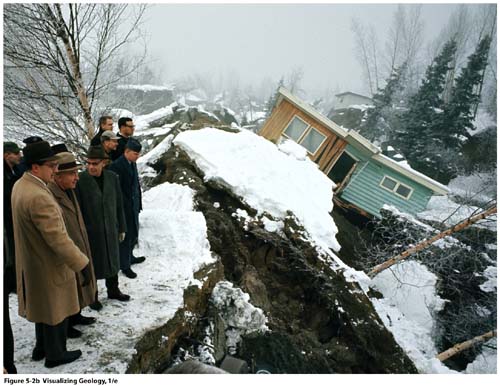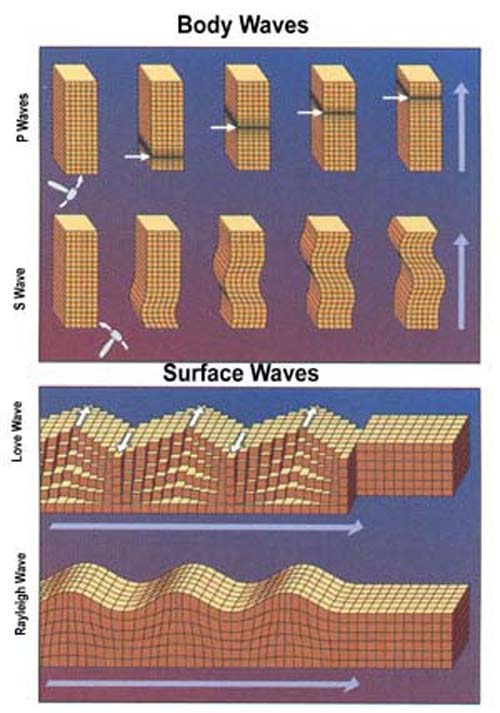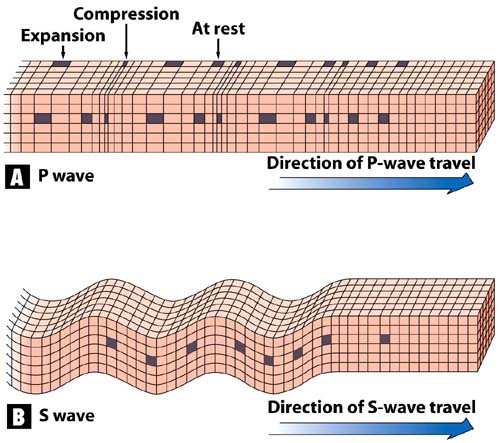Earthquakes
| The friction between huge blocks of rock is always building up. When this stress becomes great enough to overcome the friction along a fault, the energy released by the slip of two blocks of rock becomes a violent earthquake. |  |
|
The
energy released by an earthquake is transmitted to other parts of Earth
in the form of seismic waves.
|
 |
|
Two main types of waves are produced once the stress that produces an earthquake is released Body waves – Seismic waves that travel through Earth’s interior. Surface waves – Seismic waves that travel along Earth’s surface. |
 |
| Surface waves – Travel long or near Earth’s surface, like waves along the surface of the ocean. They travel more more slowly than P and S waves, and they pass around the Earth, rather than through it. Thus, surface waves are the last to be detected by a seismograph. |  |
|
Body waves are divided into two types: Compressional wave – A seismic body wave consisting of alternating pulses of compression and expansion in the direction of wave travel; P wave or primary wave. Shear wave – A seismic body wave in which rock is subjected to side-to-side or up-and-down forces perpendicular to the wave’s direction of travel; S wave or secondary wave. |
 |
 |
 |
Brooklyn College - Geology Department